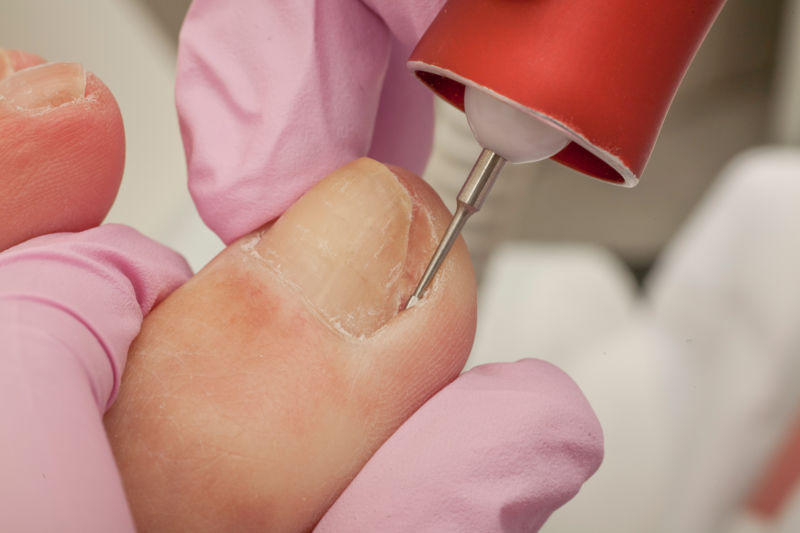Ingrown toenails are a very common problem that brings a patient to see a podiatrist. Ingrown toenails occur when sides of the nails grow in to the skin surrounding the nail. This pinching and irritation to the skin causes a painful condition that, if left untreated, can cause an infection. This infection can lead to a very serious problem, especially in people with other medical conditions including diabetes, peripheral vascular disease and compromised immune systems.
Symptoms of Ingrown Toenails
Early signs and symptoms of ingrown nails include redness and swelling of the skin on the sides of the nail, pain, bleeding, draining pus and thickness, and an overgrowth of the skin surrounding the nail. Late signs and symptoms may include the infection spreading to other areas of the foot, and in some cases, causing an infection of the underlying bone. It is important to treat an ingrown toenail early to prevent it from worsening and complications arising.
Treatment of Ingrown Toenails
Fortunately, there are effective treatments for infected ingrown toenails. While some ingrown toenails can be treated at home, it is important to see your podiatrist if you think it in infected or if you have condition affecting your blood flow and circulation, such as diabetes. During the physical exam, the doctor will perform a thorough assessment of foot and the involved toe. If the condition was caused by trauma or if the infection is severe, x-rays may be taken to assess for fracture or infection of the bone. Non-invasive vascular testing will be also performed to ensure the blood supply to the area is functioning properly.
After assessment, the proper treatment plan for your ingrown toenail can be pursued. Oral medication will be prescribed for a infected ingrown toenail treatment plan. From there, your podiatrist can determine how much, if not all, of the affected toenail needs to be removed.

Ingrown Toenail Surgery
The treatment for ingrown toenails involves an in-office surgery to remove the offending border of the nail. In order to perform the toenail surgery as painlessly as possible, local anesthetic will be injected into the toe. Many patients are concerned about pain from the injection, but don’t worry. We use a topical numbing agent to make the injection nearly painless. After the anesthetic is working, you will not feel any surgical pain or discomfort. Now the painful portion of the nail can be safely removed and allow for drainage of the infection.
Ingrown Toenails
It is routine to send the removed portion of the nail to be tested for fungus, so that appropriate treatment can be initiated, further reducing the future risk of ingrown nails. Detailed instructions for care after ingrown toenail surgery are dispensed along with a thorough explanation of what to do when you get home. There is minimal pain after the toenail surgery that is normally controlled very well with Tylenol. When appropriate, oral antibiotics are prescribed. Our staff will then schedule a follow-up appointment to ensure you are healing properly. In the event that the ingrown nail continues to come back, a permanent procedure can be performed to prevent this recurrence. This is an in-office procedure that involves applying a special chemical to the nail bed, after removing the painful border of the nail. This procedure has over a 90% success rate in preventing painful ingrown nails.